Embrun Plant Lifecycle: Spring Care for Lasting Beauty
Spring Gardening Quick Start
Get your Embrun garden ready for a beautiful season with these essential spring steps:
- Cleanup: Clear winter debris, assess damage, and define bed edges.
- Soil Prep: Amend soil with compost for better drainage and nutrients.
- Pruning: Trim shrubs appropriately based on their flowering time.
- Watering/Feeding: Water wisely and provide nutrients as needed.
- Eco-Tips: Use native plants and water conservation techniques.
Ready to transform your yard? Request a free estimate today!
Introduction: Spring Awakening in Embrun – More Than Just Melting Snow!
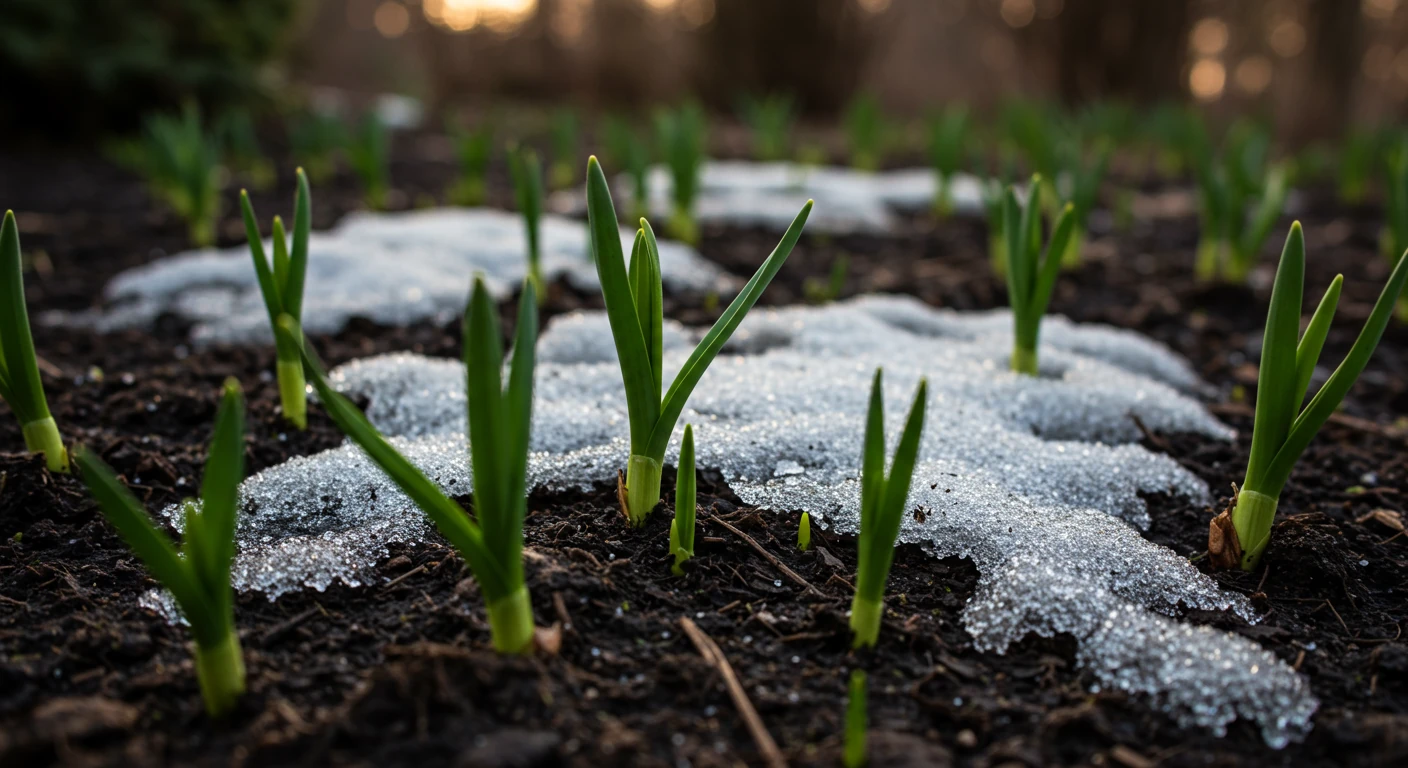
Well folks, it looks like winter has *finally* decided to pack its bags (we hope!). As the last stubborn patches of snow melt away here in Embrun and across the greater Ottawa region, there’s a palpable sense of excitement in the air. Gone are the days of digging out the car, replaced by the promise of warmer breezes and – dare we say it – sunshine! That soggy ground isn’t just mud; it’s potential waiting to happen.
This seasonal shift signals the official start of the gardening and landscaping season. Whether you’re tending a balcony garden in Embrun, planning a backyard oasis in nearby Russell, or tackling a larger property in Greely, springtime is go-time. But it’s more than just shaking off the winter blues. The care you give your yard *now* is absolutely crucial for season-long beauty and plant health. Think of it as laying the foundation: proper spring cleanup (like our Embrun garden clean up service offers), early lawn care, and smart soil preparation set the stage for thriving flowers, robust shrubs, and a lawn that makes the neighbours jealous (in a friendly way, of course!). Let’s dive into how to give your landscape the wake-up call it deserves!
Step 1: The Grand Garden Wake-Up Call – Assessment & Cleanup
Okay, let’s roll up those sleeves (or maybe just put on some gloves for now!). Step one is all about seeing what winter left behind and doing that initial tidying up. Think of it as your garden’s gentle nudge awake after a long nap.
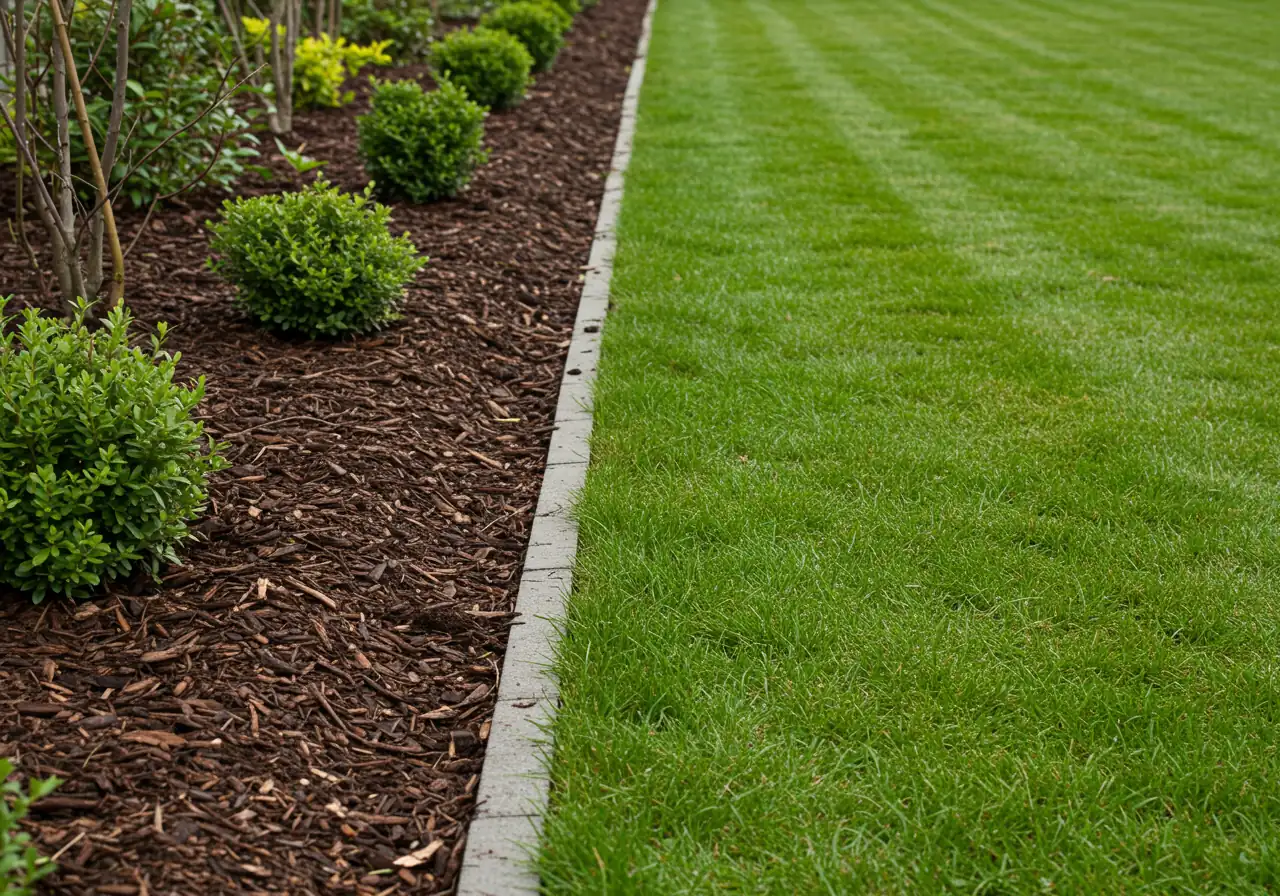
Step 1: The Grand Garden Wake-Up Call – Assessment & Cleanup
Before you even think about planting those pansies, it’s time for a thorough walkabout. Grab a notepad (or your phone) and let’s assess the situation. Consider this your landscape detective phase!
- Damage Control Assessment: Wander through your yard. How did everything fare over winter? Look for broken branches on trees and shrubs, evidence of salt damage near walkways, or any perennials that look particularly sad or didn’t survive. Sometimes, despite our best efforts detailed in guides like the , winter can still take a toll. Note any major issues; some problems might need more intensive solutions later, similar to the approaches discussed for Embrun Garden Recovery: Fixing Summer Damage.
- Lawn Reconnaissance: Take a peek at your lawn. Is it looking patchy, compacted, or generally worse for wear? Maybe your lawn in Embrun looks different from your friend’s over in Barrhaven due to different conditions. Note any bare spots, soggy areas, or suspicious colouring. We’ll tackle lawn care specifics later, but knowing the starting point is key. Consider our Ottawa yard cleanup service for comprehensive lawn assessment.
- Hardscape Check-up: Don’t forget your patios, walkways, driveways, and retaining walls! Winter’s freeze-thaw cycles can be tough on these structures, especially noticeable on older interlock patios you might see in areas like Manotick or Metcalfe. Look for cracks, shifting stones, or drainage issues. Early detection saves headaches later. Major issues might require professional assessment, check our Landscaping Services.
- The Great Debris Round-Up: Now for the cleanup! Winter often leaves behind a collection of… let’s call them “party favors” – fallen leaves, twigs, leftover plant stalks, and general clutter. Gently rake leaves off lawn areas and out of garden beds. *Be careful!* Those little green shoots starting to poke through are delicate perennials and bulbs waking up. Use a light touch, especially around emerging plants. If you’re dealing with heavy soil, like the clay common in some Ottawa areas, be extra cautious not to compact it while wet – a crucial point covered in our guide to . Our Property Clean Up service handles debris removal efficiently.
- Tool Time Prep: Drag out your shovels, rakes, pruners, and wheelbarrow. Are they clean? Are the pruners sharp? Dull tools make work harder and can damage plants. Give them a quick clean and sharpen blades if needed. A little maintenance now saves frustration later. Need tool recommendations? Contact us!
- Bed Edging Definition: Once the debris is clear, re-establishing the edges of your garden beds gives your landscape an instant facelift. A crisp edge between lawn and garden beds makes everything look tidier and prepares the space beautifully, whether you’re refreshing existing beds or planning something new, perhaps inspired by the . Our Mulching and Edging service provides that perfect finish.
This initial assessment and cleanup might seem like a chore, but it’s the essential first step to a beautiful season. If the task feels overwhelming, remember there are professional Landscaping and Cleanup Services available right here in the Ottawa area, including Metcalfe yard cleanup and Marionville yard cleanup, to give you a head start!
Step 2: Soil Success – Feeding the Foundation of Your Embrun Garden
Okay, Step 1 gave your garden its wake-up nudge. Now, let’s talk about breakfast for your plants – the soil! Seriously, good soil is the absolute foundation for a thriving Embrun garden. Think of it like building a house; you wouldn’t skimp on the foundation, right? Same goes for your plants! Neglect the soil, and you’ll be fighting an uphill battle all season.
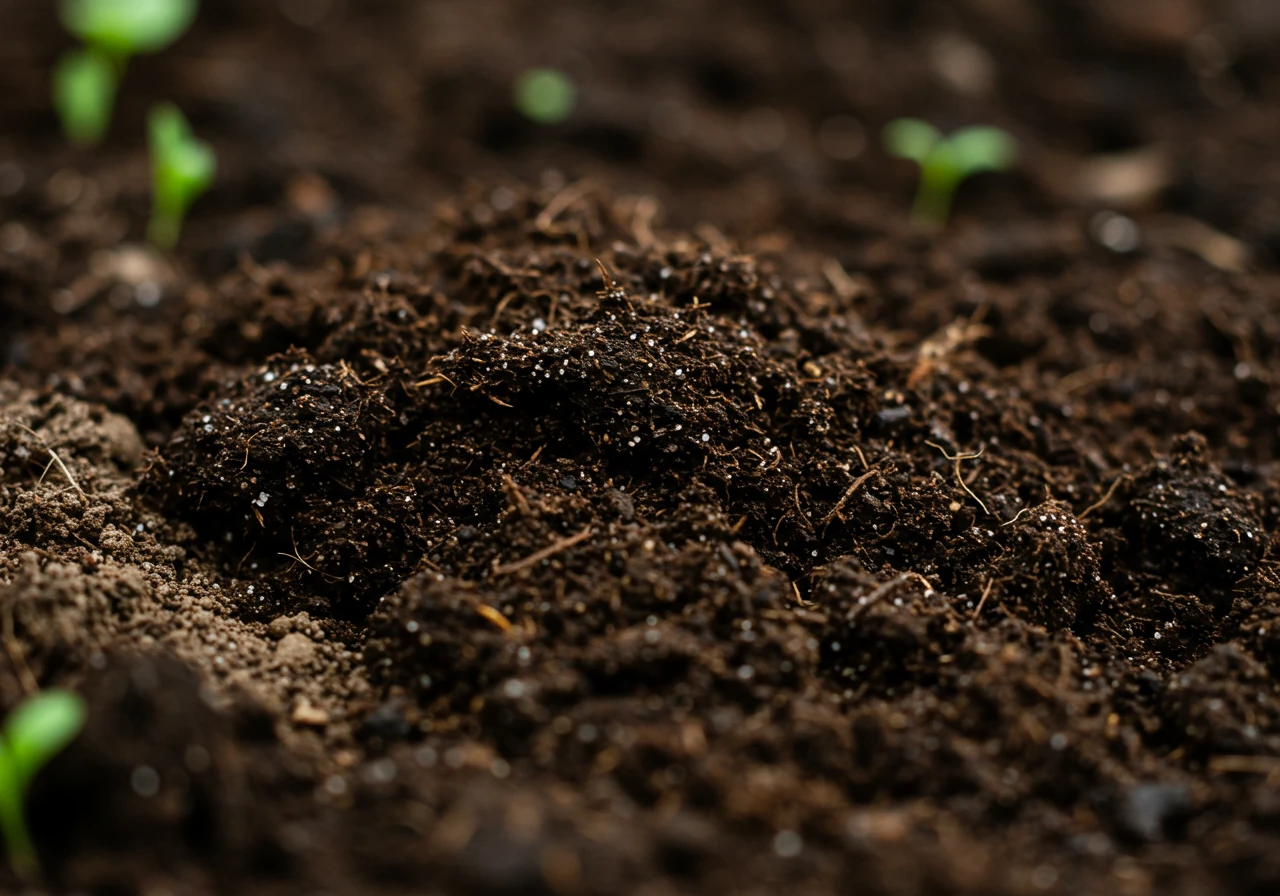
Step 2: Soil Success – Feeding the Foundation of Your Embrun Garden
Here in the Ottawa region, we’re often blessed with (or sometimes cursed by!) soils that lean towards heavy clay, perhaps like you might find around Winchester, or pockets of sandier soil, maybe closer to the river near Osgoode. Clay holds moisture and nutrients well but can drain slowly and become hard as rock when dry. Sandy soil drains *too* fast, taking nutrients with it. Knowing your soil type is half the battle! For reliable local gardening info, check out the Master Gardeners of Ottawa-Carleton website.
Before you start dumping amendments willy-nilly, consider a simple soil testing. You can grab kits at garden centres or send samples to a lab. This tells you your soil’s pH (whether it’s acidic or alkaline) and what nutrients might be lacking. It takes the guesswork out and helps you feed your soil exactly what it needs for optimal plant health.
Now, for the magic ingredient: organic matter! Adding things like compost, well-rotted manure, or leaf mold is the single best thing you can do for almost any soil type. This soil preparation step is key.
- Compost: The champion! It improves clay soil structure (making it drain better) and helps sandy soil hold onto moisture and nutrients. It’s like a spa treatment for your garden beds.
- Aged Manure: Packed with nutrients, but make sure it’s well-rotted (at least 6 months old) so it doesn’t burn tender plant roots. Fresh stuff is a no-go!
- Leaf Mold: Basically, decomposed leaves. Fantastic for improving soil texture, especially heavy clay.
Gently work a few inches of your chosen amendments into the top 6-8 inches of your garden beds. No need for deep, back-breaking tilling which can actually harm beneficial soil organisms. If sourcing quality soil amendments feels daunting, remember that good Material Selection is Key for Landscaping Success.
Crucial Tip: Resist the urge to work the soil when it’s soggy! Squeeze a handful – if it forms a tight, wet ball that doesn’t crumble easily, step away from the shovel. Working wet soil, especially clay, compacts it terribly, squeezing out air pockets roots need. Patience, young grasshopper! Wait until it’s just moist. If prepping the beds feels like too much after the initial tidy-up, remember professional help like the Embrun Garden Clean Up Service can often include bed preparation. Similar specialized help is available in nearby areas too, like the dedicated Metcalfe Property Cleanup Service or Marionville Property Cleanup Service.
Once amended, consider adding a layer of mulch (like shredded bark or wood chips) later in the spring once the soil has warmed up. Mulch helps retain that precious moisture, keeps weeds down, and protects your newly improved soil. Investing time in your soil now leads to those stunning garden Showcase-Worthy Landscape Transformations later in the season. If you need a hand with any part of this process, from testing to amending to mulching, comprehensive Landscaping and Gardening Services are available to help build that perfect foundation.
Step 3: Pruning Power & Planting Prep – Shaping Up and Starting New
Okay, team, we’ve tackled the big cleanup and given our soil some serious TLC. Now it’s time for Step 3: Pruning Power & Planting Prep! Think of this as giving your existing plants a smart spring haircut and getting everything ready to welcome new additions to the garden family.
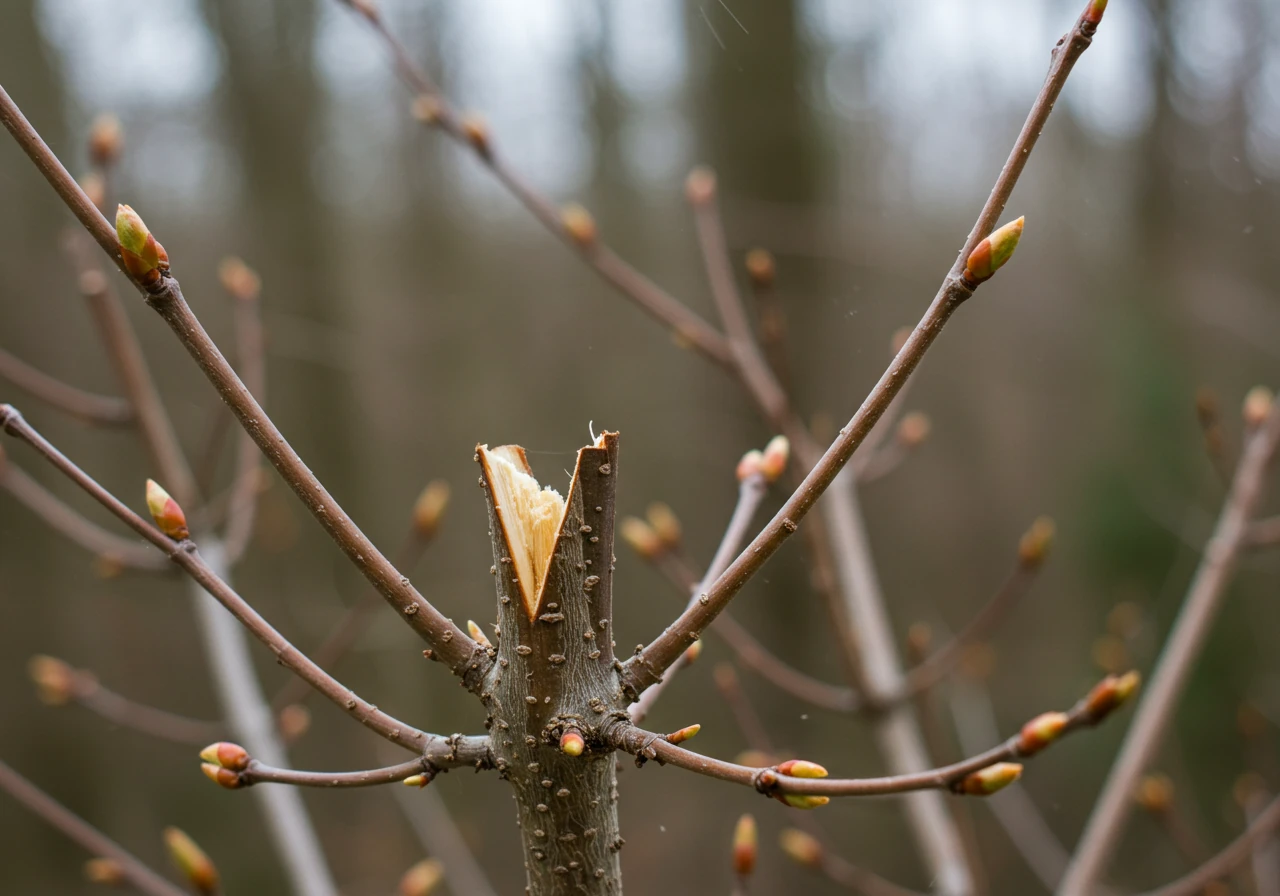
Step 3: Pruning Power & Planting Prep – Shaping Up and Starting New
First up: pruning. Why bother? Well, proper pruning does wonders! It removes dead or damaged branches (goodbye, winter casualties!), encourages healthy new growth and more flowers, improves air circulation (which helps prevent diseases), and keeps shrubs from looking like they had a fight with a lawnmower and lost. Think of it as strategic snipping for better plant health and aesthetics.
But *when* you prune is super important, especially here in Ottawa with our distinct seasons. Get it wrong, and you might accidentally snip off this year’s flower buds – oops! Need guidance on tree care? The City of Ottawa offers resources on urban forests and tree planting.
- Summer-Flowering Shrubs: Plants that bloom later in the summer (like potentilla, Annabelle hydrangeas, and some spireas) generally get pruned in early spring, just as buds begin to swell but before major leaf growth starts. This encourages vigorous new growth that will carry this season’s flowers.
- Spring-Flowering Shrubs: Shrubs that put on their show in spring (think lilacs, forsythia, magnolias) should be pruned *immediately after* they finish flowering. If you prune them early in spring, you’ll cut off the buds they already set for this year’s bloom.
- Roses: These divas often need specific spring pruning depending on the type. Generally, remove dead or crossing canes and shape them up once the worst threat of frost has passed.
- Trees: Significant tree pruning is best left to the pros, but you can usually remove smaller dead or broken branches anytime.
Need a more detailed, plant-by-plant pruning guide? Let us know – we might just whip one up! Cleaning up all those clippings can be part of the job, and if pruning feels overwhelming, services like the Metcalfe property cleanup service or the Marionville garden clean up service often include pruning tasks. Dealing with larger estates or more extensive pruning needs? A comprehensive Marionville property cleanup service might be the ticket.
Spring is also prime time for dividing perennials that have become too large or aren’t flowering as well as they used to. Got hostas or daylilies looking crowded in your Kars or Vernon garden? Early spring, just as new growth appears, is often a great time to carefully dig them up, split the clump with a sharp spade or knife (making sure each division has roots and shoots), and replant them. Bonus: free plants! Make sure the new spots have undergone that crucial soil preparation we talked about earlier.
Ready to plant some newbies? Choose plants suited for our Ottawa climate (generally Zone 5a, but check specific tags). Consider sun exposure and water needs *before* you buy. If you started seeds indoors, don’t just plunk them outside! They need to be “hardened off.” This means gradually introducing them to outdoor conditions over 7-10 days – a few hours of shade first, then more sun, a bit of wind, cooler nights – bringing them in if frost threatens. This prevents shock and helps them transition smoothly. Our Garden Install service can help select and plant the perfect additions.
Feeling ready to shape up your garden and bring in some fresh faces? Proper pruning and planting prep sets the stage for a stunning season. If you’d like help scheduling any of these services, you can easily manage your appointments when you book your service via our customer portal. Don’t forget to check our latest work on our Google Business Profile!
Simplified Spring Gardening Timeline
Early Spring (March-April)
Focus on cleanup: remove debris, cut back ornamental grasses, assess winter damage. Check tools. Prune summer-flowering shrubs.
Mid-Spring (April-May)
Amend soil with compost. Edge garden beds. Divide overcrowded perennials. Start hardening off seedlings. Apply spring lawn fertilizer.
Late Spring (May-June)
Plant annuals and tender vegetables (after frost risk). Apply mulch. Prune spring-flowering shrubs *after* blooming. Monitor watering needs.
Step 4: Smart Sips & Spring Snacks – Watering and Fertilizing Wisely
Okay, plants are settled in their nicely prepped soil (thanks, Step 2!) and looking sharp after their pruning (Step 3!). Now it’s time for the crucial bits: giving them the right drinks and snacks. Let’s dive into Step 4!
Step 4: Smart Sips & Spring Snacks – Watering and Fertilizing Wisely
Think of your garden like a growing kid – it needs the right amount of water and food to thrive, but too much or the wrong kind can cause problems. Getting this balance right is key for a gorgeous, healthy landscape all season long.
Water Wisdom: Less is Often More (Especially in Spring!)
Spring in the Ottawa area often brings its fair share of rain (sometimes more than we’d like!). Unlike the hot, dry days of summer, plants usually need less supplemental watering in spring. The biggest mistake? Overwatering! Soggy roots can lead to rot and disease faster than you can say “waterlogged.” For water conservation tips relevant to our region, the Rideau Valley Conservation Authority is a great resource.
- The Finger Test: Forget rigid schedules. The best way to know if your plants need water is the good old finger test. Poke your finger about an inch or two into the soil near the plant’s base. If it feels dry at that depth, it’s time for a drink. If it’s damp, hold off. Simple!
- Water Deeply, Less Often: When you *do* water, water thoroughly. Aim to moisten the soil down to the root zone (usually 6-8 inches deep for established plants). Light, frequent sprinkles just encourage shallow roots, making plants *more* vulnerable during dry spells. A good soak once or twice a week (if needed) is much better than a little splash every day.
- Morning Glory: Watering early in the morning is usually best. It gives foliage time to dry before evening, reducing the risk of fungal diseases. Plus, less water evaporates in the cooler morning air.
- Conservation Counts: Even with spring rains, being water-wise is smart. Using mulch (like we mentioned in Step 2!) helps retain soil moisture beautifully. Consider rain barrels to collect runoff for watering containers or thirsty plants. Every drop helps, especially as we head towards potentially drier summer months, whether you’re in central Ottawa or out in Nepean. Our Garden Maintenance plans often include watering schedule advice.
Fertilizer Fundamentals: Feeding Your Floral Friends
Fertilizer is like plant vitamins – it provides essential nutrients they might not get enough of from the soil alone. But again, *more isn’t always better*. Over-fertilizing can burn roots and harm your plants.
- Know Your N-P-K: Fertilizer bags always have three numbers, like 10-10-10 or 20-5-10. These represent Nitrogen (N – for leafy green growth), Phosphorus (P – for roots, flowers, and fruit), and Potassium (K – for overall plant health and hardiness). Understanding what your specific plants need helps you choose the right blend. Remember that soil test from Step 2? It’s your best guide here!
- Types of Feed:
- Granular: Slow-release pellets you sprinkle around plants and water in. Good for steady feeding.
- Liquid/Water-Soluble: Mixed with water and applied during watering. Gives plants a quicker boost.
- Organic: Things like compost tea, fish emulsion, or bone meal. Often release nutrients more slowly and improve soil structure. Our team often discusses options – you can learn more About Us and our approach to sustainable care.
- Timing is Everything: Generally, hold off on fertilizing until plants are actively growing. For most perennials and shrubs, a light application of a balanced fertilizer in mid-to-late spring is plenty. Lawns have specific needs, often benefiting from an early spring feed through our Lawn Care program. Avoid fertilizing stressed plants (like those struggling with drought or disease). If you’re seeing the amazing results of well-fed plants in our Gallery, remember that timing played a big role!
- Follow Directions: Seriously, read the package instructions! Applying the right amount is crucial. Using too much is wasteful and potentially harmful. Always follow the guidelines provided. Understanding application rates and schedules is important, just like understanding service details outlined in our Terms and Conditions. Our commitment to transparency is also covered in our Privacy Policy.
Putting it Together:
Maybe jot down a simple schedule: “Check soil moisture Mon/Thurs. Fertilize perennials end of May.” Tailor it to your yard. Consistent, thoughtful care now means less troubleshooting later.
If managing watering schedules or figuring out the right fertilizer feels like a puzzle, remember that help is available. Many homeowners rely on comprehensive services like the Ottawa property cleanup service which can include lawn fertilization and seasonal care advice. For larger properties with extensive gardens or lawns, something like the Metcalfe property cleanup service (or even Marionville property cleanup) might offer tailored feeding programs. Smart sips and snacks lead to happy, healthy plants!
Caring for Returning Favorites (Perennials)
Spring is crucial for perennials waking up from dormancy. Gently clear away old mulch and dead foliage from around crowns. Watch for new growth before dividing overcrowded clumps (like Hostas or Daylilies). A light top-dressing of compost gives them a gentle nutrient boost. Monitor for pests like slugs as temperatures rise. Proper care now ensures a strong showing later in the season, a key part of our Garden Maintenance service.
Getting Ready for Seasonal Color (Annuals)
Prepare beds for annuals by loosening the top few inches of soil and incorporating compost or a balanced slow-release fertilizer (following soil preparation best practices). Ensure the area drains well. Wait until the danger of frost has truly passed (check local forecasts!) before planting tender annuals. Harden off any seedlings started indoors to prevent shock. Need help with planting? Check our Garden Install options.
Waking Up Your Lawn
Gently rake your lawn to remove debris and lift matted grass, improving air circulation (especially important after snow mold). Overseed thin or bare patches. Apply a spring-specific lawn fertilizer to encourage root growth and green-up. Avoid heavy foot traffic on soggy areas. A healthy spring start sets the stage for a robust lawn, see our Lawn Care page for more details. We also offer Sod Installation for major lawn renovations.
Step 5: Greener Gardening – Eco-Friendly Spring Practices for Embrun
Okay, we’ve covered the basics, but let’s take our Embrun gardening game to the next level – the green level! Being eco-friendly doesn’t mean your garden has to look like a science experiment gone wrong; it just means making smarter, gentler choices for Mother Earth. Think of it as giving your landscape a hug!
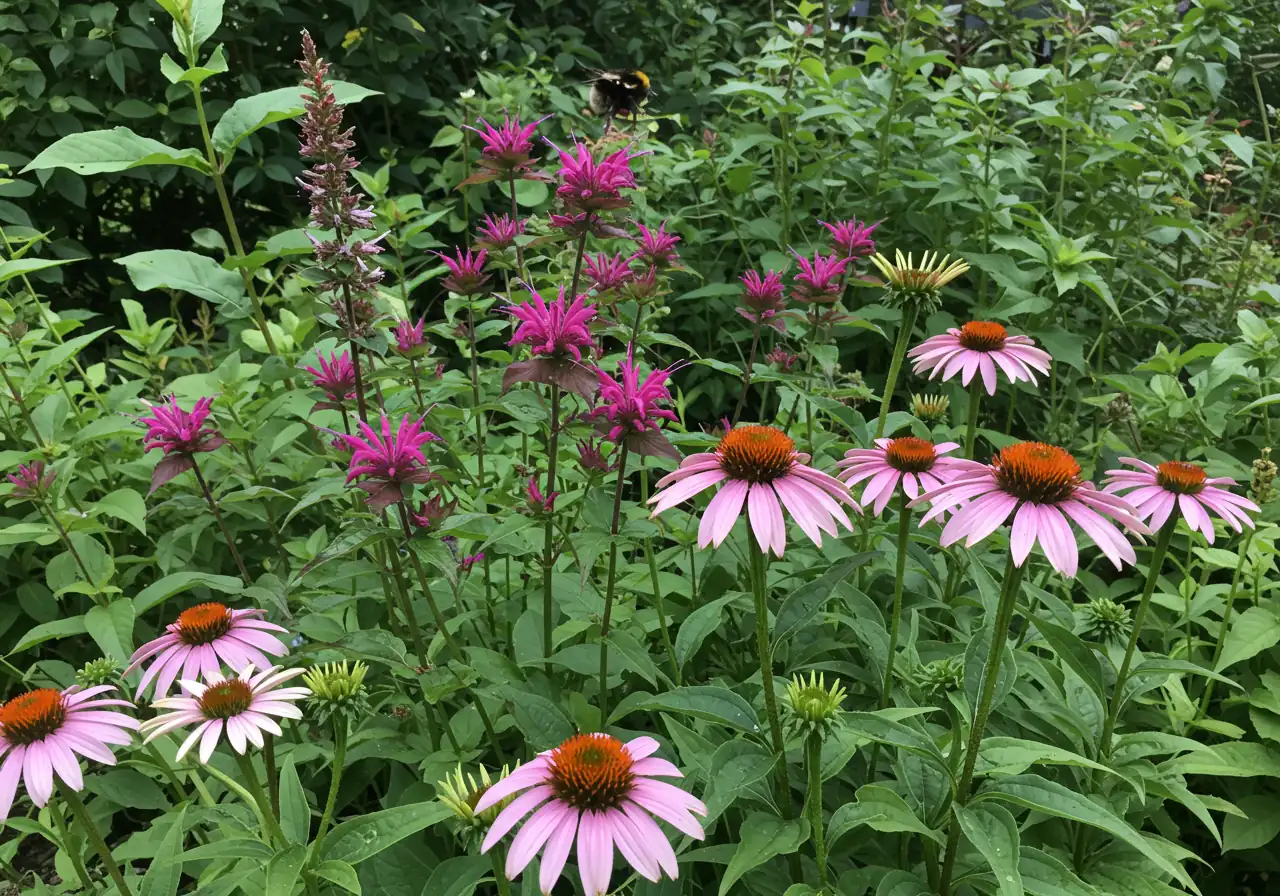
Step 5: Greener Gardening – Eco-Friendly Spring Practices for Embrun
First off, let’s talk pests. Instead of reaching for the heavy artillery at the first sign of an aphid, embrace Integrated Pest Management (IPM). It sounds fancy, but it just means starting with the simplest solutions – like hand-picking those pesky beetles (satisfying squish optional!) or using a strong spray of water. Sometimes, attracting beneficial insects like ladybugs (who *love* aphids) is all you need! Only use stronger treatments as a last resort.
Consider planting native species. Plants native to the Ottawa Valley region (perfect for Embrun or nearby spots like Russell) are already adapted to our soil and climate. This means less fussing, less watering, and they provide food and shelter for local birds and pollinators. Win-win-win! If you’re thinking of swapping out some lawn for a beautiful native plant bed, professional garden install services can help design and create the perfect space.
Got kitchen scraps and yard trimmings? Don’t toss ’em – compost them! Creating your own “black gold” is fantastic for improving your soil naturally, reducing the need for store-bought fertilizers. Plus, it keeps waste out of landfills. Setting up a simple compost bin is easier than you think, and clearing a spot for it can be part of a general Ottawa garden clean up service visit or even a Metcalfe garden clean up.
Speaking of lawn, consider reducing its size. Lawns demand a lot of water and maintenance. Replacing even a small section with groundcovers, shrubs, or those lovely native plants creates habitat and visual interest. Less mowing, more watching butterflies – sounds like a fair trade! Reducing lawn and managing what remains can be part of a larger plan; you might even book an estimate to discuss landscape changes and get feedback on your ideas.
Finally, let’s revisit water wisdom, but with an eco-focus. Group plants with similar water needs together. Applying a good layer of organic mulch is fantastic – it keeps weeds down naturally *and* conserves precious soil moisture, reducing how often you need to water. Professional mulching and edging not only looks sharp but is a key eco-friendly practice. Tackling invasive species removal or implementing larger eco-friendly landscape changes across your property? Sometimes calling in the pros like an Ottawa property cleanup service or Marionville garden clean up service makes sense for a greener, healthier yard.
Making even a few of these green shifts can make a big difference for your garden and our local Embrun environment! Thank you for considering sustainable practices; learn more on our thank you page after booking.
Estimated Spring Task Time Allocation
Highlight Box: Embrun Spring Garden Quick Wins
Feeling a bit snow-blinded by the spring gardening to-do list? Don’t sweat it! Here are 5 speedy ways to give your Embrun landscape a fantastic head start this season, without needing a degree in horticulture (or losing your weekend entirely!).
- Tidy Up & Trim Smart: First things first! Gently rake away winter’s leftover leaves and twigs, being careful around emerging plant shoots. Define those garden bed edges for instant tidiness. Prune summer-flowering shrubs now, but wait until *after* flowering for spring bloomers like lilacs! If the debris pile looks more like Mount Embrun, remember professional teams like the Metcalfe yard cleanup service can make quick work of it.
- Feed Your Foundation (The Soil!): Happy plants start with happy soil. Before planting annuals or veggies, boost your garden beds by mixing in a few inches of compost or well-rotted manure. This simple soil preparation step drastically improves drainage *and* nutrient availability, leading to better plant health all season long across Ottawa.
- Go Native & Plant Smart: Consider swapping some needy plants for beautiful, hardy native species suited to our Embrun climate. They generally require less water and fertilizer, plus they support local pollinators! Thinking of a bigger garden install project with native plants? Check out professional garden installation services to bring your vision to life.
- Give Your Lawn Some Love: Don’t forget the green carpet! Gently rake any matted patches, overseed bare spots, and consider an early spring fertilizer application specifically designed for lawns. Consistent spring lawn care is your ticket to a lush, green summer lawn that’s the envy of the neighbourhood (in a good way!).
- Water Wisely & Stay Secure: Resist the urge to drown your plants, especially in cool spring weather! Use the ‘finger test’ – poke into the soil an inch or two; if it’s dry, water deeply. If damp, wait! Overwatering causes more problems than underwatering early on. And speaking of smart choices, when using online resources or booking services, it’s always wise to understand how your information is protected. Feel free to review our company’s Privacy Policy anytime for details.
FAQ: Your Embrun & Ottawa Spring Gardening Questions Answered
Ah, the age-old question! While the May long weekend (Victoria Day) is the popular rule of thumb, Ottawa’s weather can be tricky. Keep an eye on the forecast! A surprise late frost can zap those tender plants. For delicate veggies and flowers, it’s often safer to wait until the first week of June or be ready with covers just in case winter decides on one last encore.
Don’t panic! Those grey patches are likely snow mold, which usually clears up as things dry out. Gently rake the affected areas to improve air circulation, but avoid heavy raking on soggy ground. Overseeding bare patches can help fill things in. Dealing with leftover debris and getting the lawn ready is often part of a thorough Ottawa yard cleanup service. Patience and gentle care are key!
Great question – clay soil needs respect in spring! The most important rule is: don’t work it when it’s wet and sticky. Wait until it dries enough to crumble slightly when squeezed. Gently incorporate compost to improve structure, but avoid excessive tilling. Light cultivation and adding amendments carefully can be part of a Metcalfe garden clean up service if you need a hand getting beds ready.
Pesky critters arrive early sometimes! Before reaching for sprays, try the simplest methods. A strong blast of water from the hose can often knock them off. You can also gently wipe them off with your fingers (gloves recommended!). Attracting beneficial insects like ladybugs helps too. Stick with these gentle approaches first before considering stronger options.
Timing is key for those beautiful grasses! You’ll want to cut them back *before* the new green shoots start emerging from the base. Typically, late March or early April in the Ottawa area is ideal. Cut them down leaving about 4-6 inches of stubble. Clearing away the old stalks is one of the many spring cleanup tasks handled by the Marionville yard cleanup service if you have lots to tackle.
You’re in luck! Lots of beautiful perennials thrive here. Hostas (for shade), Daylilies (sun/part shade), Peonies (sun), Coneflowers (Echinacea – sun), and Sedum ‘Autumn Joy’ (sun) are all reliable choices that offer great colour and texture without constant fussing. Choosing tough plants simplifies ongoing garden maintenance throughout the season. Happy planting!
Conclusion: Set Your Embrun Garden Up for Season-Long Splendor
Phew! We’ve journeyed through the essential spring garden wake-up calls, from wrestling winter debris and pampering your soil to smart pruning and planting prep. So, what’s the big takeaway for your Embrun garden? Simply put: the care you invest *right now* is your golden ticket to enjoying season-long splendor. Think of this spring gardening hustle as the prep work that lets you kick back and admire your gorgeous landscaping later, maybe from a comfy chair with a cold drink!
This effort truly pays off in vibrant flowers, healthy shrubs, and overall plant health that shines through – a welcome sight anywhere from here to Winchester or across the wider Ottawa area. Remember, even tackling one step at a time moves you closer to that backyard paradise you’ve been dreaming of. It’s all about setting your space up for success before the summer rush truly begins.
Feeling inspired but maybe a tad short on time (or elbow grease)? We totally get it! Let us help you achieve that gorgeous garden without the back-breaking work:
- Explore our range of professional Landscaping and Gardening Services tailored for yards just like yours.
- Ready for a personalized plan and quote? Book your free estimate online today – it’s quick and easy!
- Curious about the transformations we create? Check out our project Gallery for inspiration! Visit our Contact Us page for any questions.
Here’s to a season filled with sunshine, happy plants, and maybe, just maybe, fewer weeds than last year! Go get that garden glowing!


